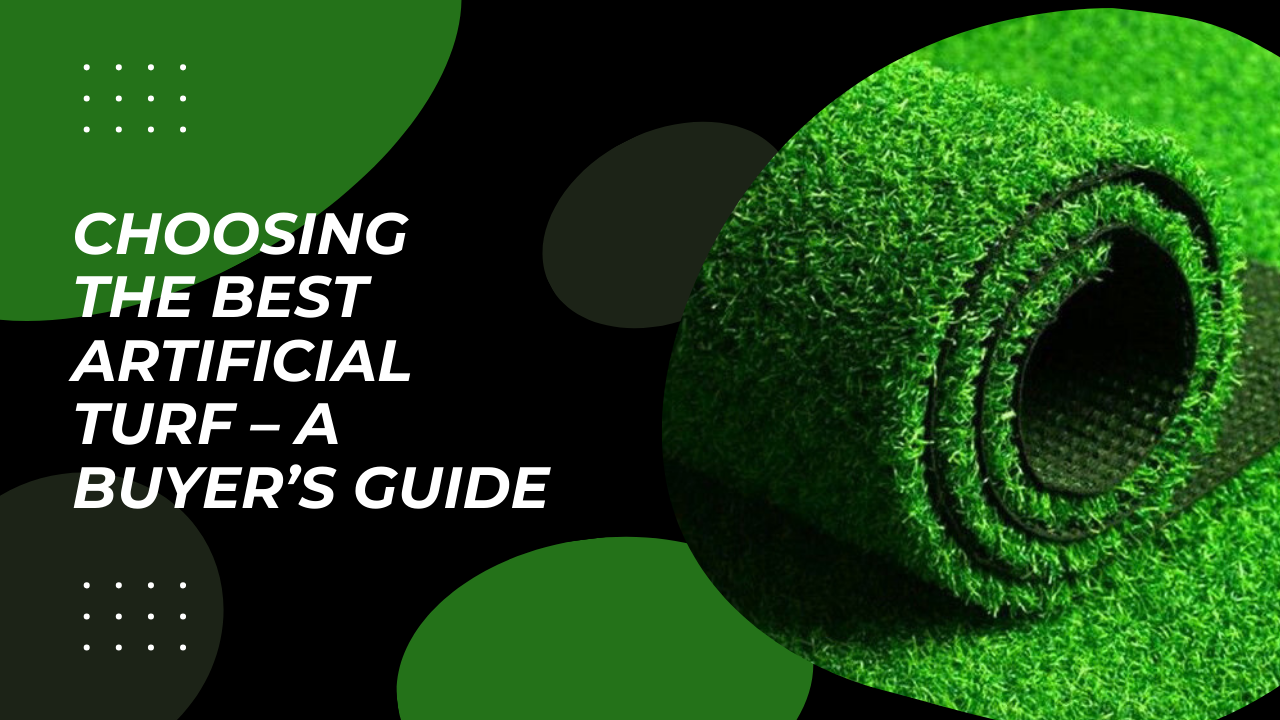Choosing the most appropriate artificial turf needs a bit of background knowledge and comprehension of the basic characteristics of the different types and qualities of artificial grasses. There are quite a number of terminologies to equally comprehend. However, a potential buyer needs to first acknowledge that, in isolation, no particular turf should be considered as simply ideal. An appropriate turf is subjective to installation area and the intended purpose. The installation location, climatic peculiarities, use and budget allocation will ultimately decide which turf a buyer could acquire. In addition, your installer’s experience and competence will go a long way to determine how fitting and aesthetically appealing your chosen turf will eventually appear. Ensure you are not simply driven by prize when selecting artificial turf – there is an ideal grade, look and fitting price for every installable location. Below is a buyer’s guide fostering proper purchase of appropriate turf for every prospective buyer.
- Select a Turf Capable of Withstanding Anticipated Foot Usage
The ability of your turf to withstand foot trampling depends on its resilience and springy formulation. A commercial space artificial turf buyer may simply not consider the same turf as a budget-tight private homeowner. When installing on a commercial or heavy foot traffic area, you must consider a turf’s matting resistance level which helps the turf to return upright rather than lay flat when trampled upon. This will be determined by the infill quality (the turf fibers stabilizer and backing protection) and the type of yarn it is made of.
Basically, there are three type of yarns. The first is the nylon yarn which is the most durable and appropriate for commercial and heavy foot traffic areas. The second is polyethylene yarn, which is the most popular choice for homeowners; moderately durable and most aesthetically endowed. The third is polypropylene yarn which is the cheapest and most appropriate for budget conscious homeowners.
- Consider Your Potential Turf’s Durability
Conventionally, artificial turfs are designed to last between 15 and 25 years. However, their durability is not universal and depend majorly on the quality of the artificial turf you buy, cum, some other minor factors, such as, the climatic realities of your location, how well it is installed and the overall maintenance. Sun, heat, dust and cold are among the common threats to the durability of your artificial turf. Hence, ensure that you purchase a quality turf, engage a competent installer and uphold your turf’s quality by maintaining the infill supply, periodically power brushing it and hosing it down to eliminate dust and pet’s deposits.
- Consider a Turf’s Drainage Capacity
A good turf allows for easy flow of water and urine into its sub-base below. This is determined by the quality of it barking. A 100% permeable backing is ideal for wet areas and allows water to directly pass through its points. On the other hand, a Hole-punched backing, only has holes for water drainage in few inches apart, hence, is ideal for mostly less water-prone locations.
- Consider a Turf’s Antimicrobial Properties
Not all turfs have antimicrobial properties. Consequently, if your artificial turf is planned to equally entertain kids and pets alike, then, you ought to buy only a turf manufactured with antimicrobial additives. This will not only safeguard against bacteria and other microbes from pet urine and germs but, likewise, fortify against the buildup of odour, thereby, guaranteeing a healthier and cleaner turf.
- Consider the Colour of Your Turf
On the bases of aesthetics, when buying artificial grasses, it is best to mimic the colour of the natural sounding grasses native to your environment. However, you can, likewise, purchase a multitone coloured turf to yet achieve same natural landscaping outlook, in line with the fact that grasses seldom grow in solitary uniform colouring.
Artificial grasses are better alternatives when considering ideal landscaping choices. The cost of keeping up with natural grasses is ridiculously higher in comparison with the lighter maintenance and durability of artificial turf which neither require mowing, fertilizing nor weeding.
